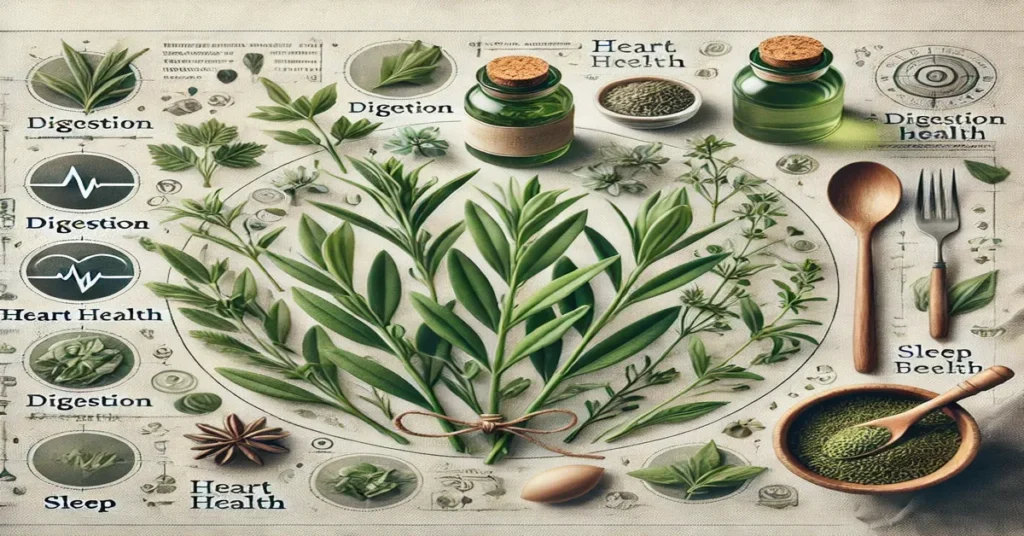Taragon (Artemisia dracunculus), commonly referred to as “dragon herb,” is an aromatic perennial herb that has carved a niche for itself in culinary and medicinal fields worldwide. Native to Eurasia and North America, tarragon is celebrated for its distinctive anise-like flavor, and its leaves are often used fresh or dried in cooking. This article explores tarragon in-depth, detailing its origins, varieties, health benefits, culinary applications, and cultivation practices.
Origins and History of Tarragon
Tarragon has a fascinating history rooted in ancient civilizations. Originally found in Central Asia, it spread through Europe and was cherished by various cultures for its unique aroma and flavor. The word “tarragon” is derived from the Latin word “dracunculus,” which means “little dragon.” Ancient folklore associated tarragon with mystical qualities, believing that it had the power to heal venomous bites and ward off illness.
By the Middle Ages, tarragon had become a staple in European kitchens and was also prized for its medicinal properties. Medieval herbalists praised the herb for its potential to ease digestive issues, alleviate toothaches, and provide relief from certain fevers. Today, tarragon is cultivated worldwide, especially in Europe, North America, and parts of Asia, continuing its legacy as a versatile herb both in the kitchen and in natural medicine.
Types of Tarragon
There are three primary varieties of tarragon, each with unique characteristics and uses:
- French Tarragon (Artemisia dracunculus var. sativa): This is the most popular and widely used variety in culinary circles. French tarragon has a delicate, sweet flavor with a hint of anise or licorice. It is a staple in French cuisine and is often used to flavor sauces, dressings, and a variety of meats and vegetables.
- Russian Tarragon (Artemisia dracunculus var. inodora): Russian tarragon is a hardier, more robust variety. Its flavor is milder and less intense than French tarragon, often described as grassy or slightly bitter. This variety is easier to grow, making it popular among gardeners, though it is less valued in cooking due to its less pronounced taste.
- Mexican Tarragon (Tagetes lucida): Also known as “Mexican mint marigold,” this plant belongs to the marigold family rather than the Artemisia genus. Despite this, its flavor profile is similar to French tarragon, with a distinct anise or licorice taste. Mexican tarragon is often used in teas, traditional Mexican dishes, and as a substitute for French tarragon in warmer climates.
Nutritional Profile of Tarragon
Tarragon is low in calories but rich in essential nutrients. A small amount provides vitamins, minerals, and antioxidants that can support health in various ways. Here is a quick overview of its nutritional content per tablespoon (about 2 grams):
- Calories: 5
- Protein: 0.2 grams
- Fat: 0.1 grams
- Fiber: 0.2 grams
- Vitamin C: Provides antioxidant protection and supports immune function.
- Vitamin A: Beneficial for vision and immune health.
- Iron: Essential for oxygen transport in the blood.
- Calcium: Vital for bone health.
In addition to these nutrients, tarragon is rich in polyphenolic compounds and essential oils that contribute to its potential health benefits.
Health Benefits of Tarragon
Tarragon has been used for centuries in traditional medicine, with modern science beginning to validate some of its potential health benefits. Below are several key health benefits associated with tarragon:
1. Aids in Digestion
Tarragon is known to stimulate the production of bile by the liver, aiding in the digestion of fats. Traditionally, it has been used to alleviate symptoms of indigestion and bloating. Additionally, tarragon’s slightly bitter compounds may help stimulate appetite and improve nutrient absorption.
2. Supports Heart Health
With its antioxidant content, tarragon may contribute to cardiovascular health by reducing oxidative stress and inflammation, which are linked to heart disease. The potassium in tarragon can also support healthy blood pressure levels, aiding in overall heart health.
3. Improves Sleep Quality
Tarragon has been linked to improvements in sleep due to its mild sedative properties. It is used in some cultures as a natural remedy for insomnia and to promote relaxation. Some studies suggest that its compounds may influence the production of neurotransmitters that affect sleep.
4. Anti-inflammatory and Antioxidant Properties
The antioxidants in tarragon, such as polyphenols, help reduce inflammation and combat free radicals, potentially lowering the risk of chronic diseases. Regular consumption of antioxidant-rich herbs like tarragon may contribute to overall health by protecting cells from oxidative damage.
5. Supports Blood Sugar Control
Tarragon may have a positive effect on blood sugar levels. Some animal studies have shown that compounds in tarragon can improve insulin sensitivity and lower blood glucose levels, making it potentially useful for managing blood sugar in people with diabetes.
6. Rich in Essential Vitamins and Minerals
Tarragon provides a range of vitamins and minerals that contribute to general well-being. For example, its vitamin A content supports eye health, while the iron present in the herb plays a role in oxygen transport and energy metabolism.
Culinary Uses of Tarragon
In the culinary world, tarragon is a versatile herb used in a variety of dishes. Its distinct aroma and flavor make it a favorite ingredient in many European recipes, especially in French cuisine.
1. Herb Blends and Seasonings
Tarragon is a key ingredient in the French herb blend “fines herbes,” which also includes chervil, chives, and parsley. This blend is commonly used in delicate dishes that do not require intense cooking, such as omelets, salads, and sauces.
2. Sauces and Dressings
One of the most famous uses of tarragon is in “béarnaise sauce,” a classic French sauce made with clarified butter, egg yolks, vinegar, and tarragon. Tarragon vinegar, which is made by infusing vinegar with fresh tarragon leaves, is also popular for making salad dressings and marinades.
3. Meat and Seafood Dishes
Taragon pairs exceptionally well with chicken, fish, and seafood. It can be used in marinades or added during the cooking process to infuse a subtle, sweet flavor. Tarragon’s unique taste complements the delicate flavors of seafood, enhancing dishes without overpowering them.
4. Vegetable Dishes
Tarragon is often used to season vegetables such as potatoes, carrots, and asparagus. It is especially delightful in spring and summer dishes, bringing a fresh, aromatic note to the table. Tarragon butter or tarragon-infused oil can add a gourmet touch to roasted vegetables.
Growing Tarragon: A Guide for Gardeners
Tarragon is a hardy herb that can be cultivated at home with some basic gardening knowledge. Below is a step-by-step guide to growing tarragon:
1. Choosing the Right Type
French taragon is often preferred for culinary use, but it requires specific growing conditions and is best propagated by cuttings since it does not produce viable seeds. Russian tarragon is easier to grow from seed and tolerates a wider range of climates.
2. Planting Tarragon
- Soil: Taragon thrives in well-drained, slightly sandy soil with a neutral to slightly alkaline pH.
- Sunlight: It grows best in full sun but can tolerate partial shade.
- Watering: Moderate watering is necessary, as over-watering can lead to root rot.
3. Propagation
French taragon is typically propagated through root division or cuttings, as seeds are not reliable. In contrast, Russian tarragon can be grown from seed and is generally more vigorous, making it easier for beginners.
4. Care and Maintenance
- Pruning: Regular pruning encourages bushier growth and prevents the plant from becoming too leggy.
- Pests and Diseases: Tarragon is relatively pest-resistant but may be susceptible to fungal diseases in overly wet conditions.
- Harvesting: Tarragon leaves can be harvested once the plant reaches a mature size. For the best flavor, it is recommended to harvest in the morning when the oils are most concentrated.
5. Overwintering
Taragon is a perennial herb, meaning it can survive through the winter with proper care. In colder climates, mulch can be applied around the base of the plant to protect the roots from frost.
Preserving Tarragon
For those who grow taragon at home, preserving the herb allows for year-round use. Here are some methods to keep its flavor intact:
1. Drying
Drying taragon is a popular method for preservation. Harvested leaves should be washed, patted dry, and left to air dry in a cool, dark place. Once dry, store the leaves in an airtight container.
2. Freezing
Freezing fresh tarragon is another effective method. The leaves can be chopped and placed in ice cube trays with water or olive oil, making them easy to add to soups and stews.
3. Infusing in Vinegar or Oil
Tarragon-infused vinegar or oil is a great way to preserve its flavor for salad dressings and marinades. Simply place fresh tarragon sprigs in vinegar or oil and let the mixture infuse for several weeks.
Conclusion
Taragon is a unique herb that has played an important role in both culinary and medicinal traditions for centuries. Its distinctive anise-like flavor and potential health benefits make it a valuable addition to any kitchen or garden. From aiding digestion to enhancing the taste of dishes, tarragon’s versatility continues to be appreciated worldwide.
Whether you’re a seasoned chef, an amateur gardener, or simply someone interested in herbs, tarragon offers numerous applications and benefits worth exploring. By understanding its varieties, health benefits, and culinary uses, you can make the most of this remarkable herb.
FAQs about Tarragon
- What does tarragon taste like? Tarragon has a unique flavor, often described as a mix of anise, licorice, and mild sweetness. French tarragon is the most flavorful variety, commonly used in cooking for its delicate taste.
- Can I use dried tarragon instead of fresh? Yes, you can use dried tarragon as a substitute for fresh. However, keep in mind that dried tarragon has a more concentrated flavor, so you may want to use a smaller amount.
- Is tarragon safe for everyone to consume? Generally, tarragon is safe in moderate amounts. However, people with allergies to plants in the Asteraceae family, and those who are pregnant or nursing, should consult a healthcare professional before using it regularly.
- How do I store fresh tarragon? Fresh tarragon can be stored in the refrigerator. Wrap the leaves in a damp paper towel and place them in a plastic bag. Alternatively, you can freeze or dry tarragon for longer preservation.
- What are the health benefits of tarragon? Tarragon is believed to aid digestion, improve sleep, support heart health, and regulate blood sugar levels. It also contains antioxidants that may reduce inflammation.
- Can I grow tarragon indoors? Yes, tarragon can be grown indoors if provided with adequate sunlight, well-drained soil, and moderate watering. It is a hardy plant that adapts well to container gardening.







